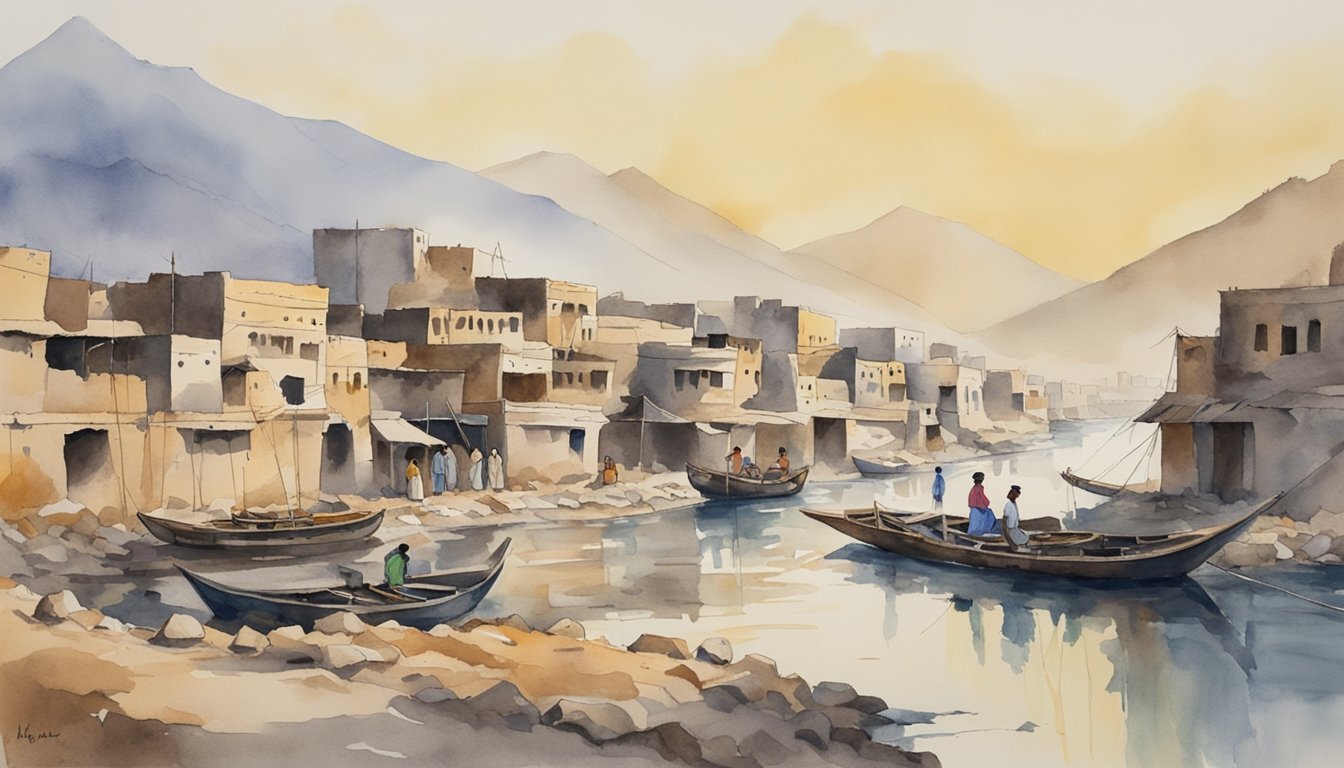Origins and Development of the Indus Valley Civilization
The Indus Valley Civilization, also known as the Harappan Civilization, heralded significant advancements in urban planning and socio-economic development. The journey from early settlements to a sophisticated urban center reflects the ingenuity of its people.
Early Settlements and Archaeological Discoveries
Archaeological excavations at sites like Mehrgarh reveal that the foundations of the Indus Valley Civilization were laid as far back as 7000 BCE. This early agricultural community flourished through domestication and eventually paved the way for more complex urban settlements. Principal archaeological sites like Harappa and Mohenjo-Daro emerged around 2600 BCE, marking the evolution into the mature Harappan phase.
Socio-Economic Structures and Urban Planning
The societal framework and city design of the Indus Valley Civilization were remarkably advanced for their time. Excavations at Dholavira and Lothal indicate meticulous urban planning, evident in sophisticated drainage systems and the existence of granaries, which highlight their emphasis on agriculture and food storage. A high level of craft specialization is evident from the numerous artisan quarters, and significant trade activities are depicted by the standardized weights and measures found.
Cultural and Technological Achievements
The residents of the Indus Valley Civilization achieved many technological triumphs, including advancements in metallurgy and seal carving. Their architecture was highly functional, featuring public baths that underscore their concern for cleanliness. Although the Indus script remains undeciphered, it reflects a complexity that suggests a rich cultural tapestry. The cities hosted a variety of public and religious structures, showcasing an intricate and methodical approach towards community and religion.
Interactions, Decline, and Legacy

The latter stages of the Indus Valley Civilization were marked by robust trade relationships and cultural exchanges leading to its profound legacy, but also enveloped in mystery are the various theories surrounding its decline.
Trade and Cultural Exchange
The Indus Valley Civilization, also known as the Harappan Civilization, engaged in extensive trade with Mesopotamia, as evidenced by archaeological discoveries of Indus seals and goods in regions such as modern-day Iraq. Their sophisticated system of weights and measures indicates a high level of standardization and complexity in trade. Moreover, excavations show signs of interaction with cultures as far-flung as Egypt and possibly even China.
Theories of Decline and Transformation
Multiple theories aim to elucidate the decline of this once-thriving empire. Climatic shifts, such as prolonged drought, are believed to have led to the desertion of major cities like Mohenjo-Daro and Harappa. Additionally, evidence suggests a gradual eastward migration of people towards the regions of Gujarat and Uttar Pradesh in India. Some hypothesize that invasions by the Aryans played a role; however, there is a lack of conclusive evidence to substantiate significant conflict during this period of transformation.
Influence on Modern Civilizations
The linguistic and cultural imprints of the Indus inhabitants have been proposed by some historians to have influenced later South Asian societies. Elements of the Dravidian language, potentially used by the Indus people, may have found their way into modern South Indian languages. In addition, archaeological sites like Rakhigarhi in Northwestern India provide insight into the life of the Indus Valley inhabitants, offering a glimpse into their urban planning genius that continues to inspire urban developers today. These ancient cities were situated in regions that now encompass parts of modern-day Pakistan, Punjab, Balochistan, Sindh, and even Afghanistan, embedding the Indus legacy deeply into the roots of contemporary South Asian culture.

